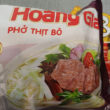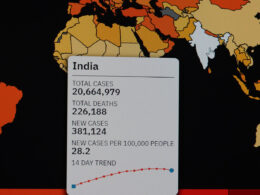The global instant noodle market size will grow significantly in 2020 and 2021 and is expected to grow from USD 54.60 billion in 2022 to USD 81.84 billion in 2029, exhibiting a CAGR of 5.95% during the forecast period.
Tokyo, Japan (Business Northeast) – How often do you buy instant noodles? In recent years, instant noodles have become people’s late-night snack partners, and some people cook instant noodles with eggs, vegetables, and meat to make a meal. During the epidemic, instant noodles were a more convenient food because it has a long shelf life and could be kept at home, which made the market size of instant noodles have increased significantly in 2020 & 2021, expected to continue to grow from 2022 to 2029.
More than 90 countries/regions worldwide already produce instant noodles, and people’s consumption of instant noodles is growing! According to an analysis report by market research firm Fortune Business Insights, the global instant noodle market has reached US$51.65 billion in 2021 and is expected to grow from US$54.60 billion in 2022 to US$81.84 billion in 2029, exhibiting a CAGR of 5.95% during the forecast period.
The report pointed out that both developing and developed countries consume instant noodles. In recent years, consumers have stockpiled essential food items at home, so consumer preference for instant noodles is expected to remain high. Instant noodles have the advantages of high-cost performance, convenience, and many flavor choices, so they are more and more popular with consumers.
Data shows that instant noodles are prevalent in Asia. In 2021, the market size of instant noodles in the Asia-Pacific region had reached 44.38 billion US dollars. Consumers in the area are willing to spend money on convenience foods to avoid paying a lot of time on traditional cooking; instant noodle consumption has snowballed in densely populated countries like China, Indonesia, and India.
On the other hand, instant noodles have also become one of the most popular foods in North America and Europe. The market research data shows that the convenience food industry is expected to grow up quickly, and the United States, Russia, and Germany all have huge consumption growth potential.
In the past, people thought that instant noodles were an unhealthy food and lacked the nutrients needed for daily needs, so some manufacturers began to develop soup-free instant noodles to reduce sodium intake and even add vitamins to instant noodles. For example, Nissin Food Group from Japan has launched healthy instant noodles with low calories and added vitamins, minerals, proteins, and other nutrients.
How do eat instant noodles healthy? Although most instant noodles on the market have a relatively high sodium content, there are nutrition labels on the packaging. Before purchasing, consumers can read the nutrition labels, choose healthier instant noodles, or consider how much instant noodles to eat. In addition, you can also reduce the use of seasoning packets and add eggs, vegetables, and meat to add nutrition!










